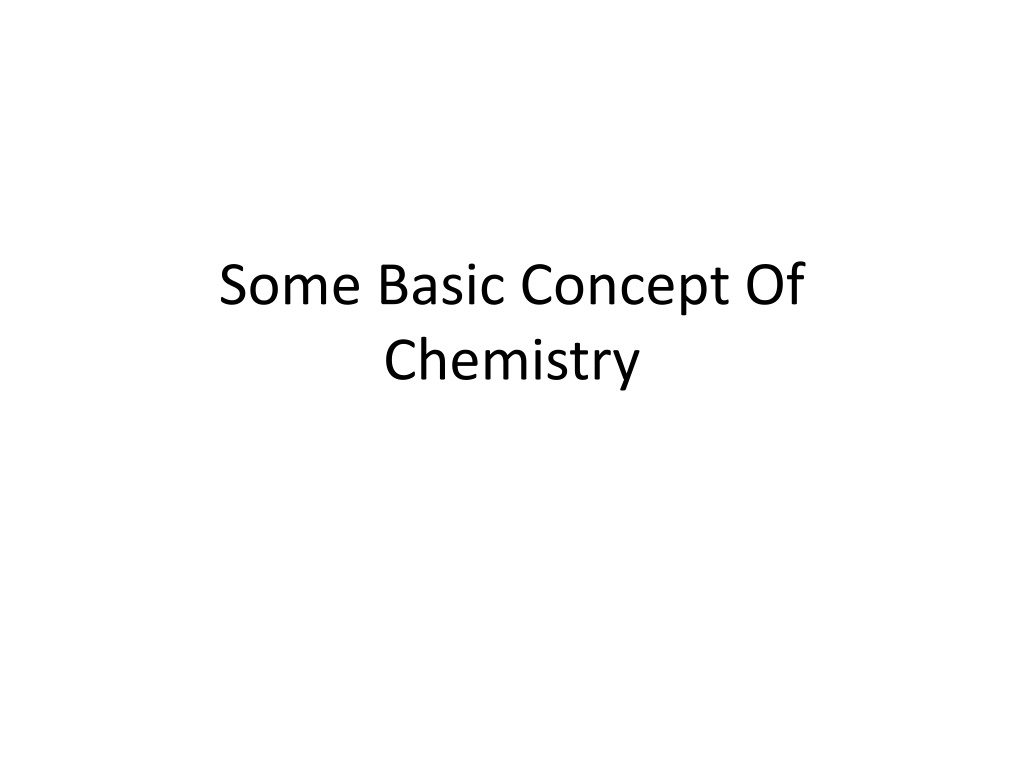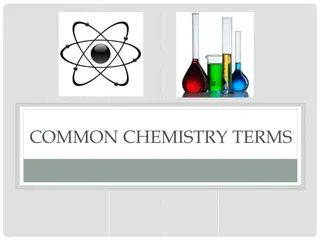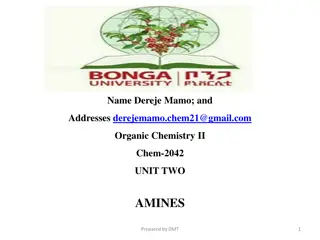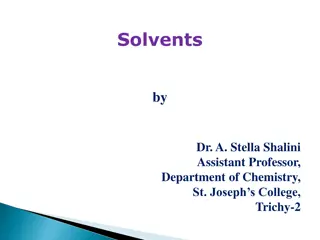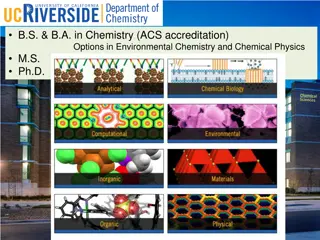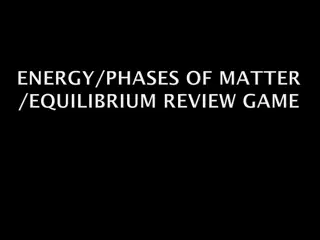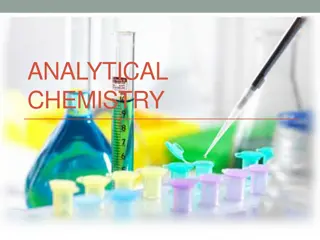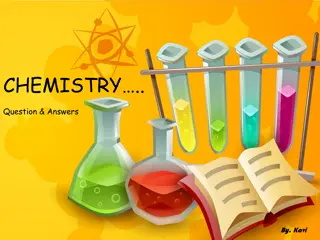Understanding Basic Concepts of Chemistry
Matter is defined as anything that occupies space and possesses mass. It can exist in three physical states: solid, liquid, and gas. Mass is the amount of matter in a substance, while weight is the force of gravity on an object. Temperature quantitatively expresses hot and cold, measured in Celsius, Fahrenheit, and Kelvin scales. The laws of conservation of mass, constant proportion, and multiple proportion govern chemical reactions and compound formation.
Download Presentation

Please find below an Image/Link to download the presentation.
The content on the website is provided AS IS for your information and personal use only. It may not be sold, licensed, or shared on other websites without obtaining consent from the author. Download presentation by click this link. If you encounter any issues during the download, it is possible that the publisher has removed the file from their server.
E N D
Presentation Transcript
Some Basic Concept Of Chemistry
Matter Matter is defined as any thing that occupies space possesses mass and the presence of which can be felt by any one or more of our five senses. Matter can exist in 3 physical states viz. solid, liquid, gas. Solid - a substance is said to be solid if it possesses a definite volume and a definite shape, e.g., sugar, iron, gold, wood etc. Liquid- A substance is said to be liquid, if it possesses a definite volume but no definite shape. They take up the shape of the vessel in which they are put, e.g., water, milk, oil, mercury, alcohol etc. Gas- a substance is said to be gaseous if it neither possesses definite volume nor a definite shape. This is because they fill up the whole vessel in which they are put, e.g., hydrogen, oxygen etc. The three states are interconvertible by changing the conditions of temperature and pressure as follows
Mass and Weight Mass of a substance is the amount of matter present in it while weight is the force exerted by gravity on an object. The mass of a substance is constant whereas its weight may vary from one place to another due to change in gravity. The SI unit of mass is the kilogram (kg). The SI derived unit (unit derived from SI base units) of weight is newton.
Temperature Temperature is a physical property of matter that quantitatively expresses the common notions of hot and cold. There are three common scales to measure temperature C (degree celsius), F (degree fahrenheit) and K (kelvin). The temperature on two scales is related to each other by the following relationship:
Law of conservation of mass In a chemical reaction the mass of reactants consumed and mass of the products formed is same, that is mass is conserved. This is a direct consequence of law of conservation of atoms. This law was put forth by Antoine Lavoisier in 1789.
Law of Constant proportion The ratio in which two or more elements combine to form a compound remains fixed and is independent of the source of the compound. This law was given by, a French chemist, Joseph Proust.
Law of multiple proportion When two elements combine to form two or more compounds then the ratio of masses of one element that combines with a fixed mass of the other element in the two compounds is a simple whole number ratio. This law was proposed by Dalton in 1803.
Gay lussac law of combining volume This law was given by Gay Lussac in 1808. He observed that when gases combine or are produced in a chemical reaction they do so in a simple ratio by volume provided all gases are at same temperature and pressure.
Avagadro law In 1811, Avogadro proposed that equal volumes of gases at the same temperature pressure should contain equal number of molecules. and
Atom Atom is the smallest part of an element that can participate in a chemical reaction. {Note : This definition holds true only for non-radioactive reactions}
Stochiometry The study of chemical reactions and calculations related to it is called Stoichiometry. coefficients used to balance the reaction are called Stoichiometric Coefficients. The
Limiting Reagent If the reactants are not taken in the stoichiometric ratios then the reactant which is less than the required amount determines how much product will be formed and is known as the Limiting Reagent and the reactant present in excess
Precentage yield As discussed earlier, due to practical reasons the amount of product formed by a chemical reaction is less than the amount predicted by theoretical calculations. The ratio of the amount of product formed to the amount predicted when multiplied by 100 gives the percentage yield.
Dalton law of Atomic theory In 1808, Dalton published A New System of Chemical Philosophy in which he proposed the following: 1. Matter consists of indivisible atoms. 2. All the atoms of a given element have identical properties identicalmass.Atoms of differentelements differ in mass. including 3. Compounds are formed when atoms of different elements combine in a fixedratio. 4. Chemical reactions involve reorganization of atoms. These created nor destroyed in a chemical reaction. are neither
